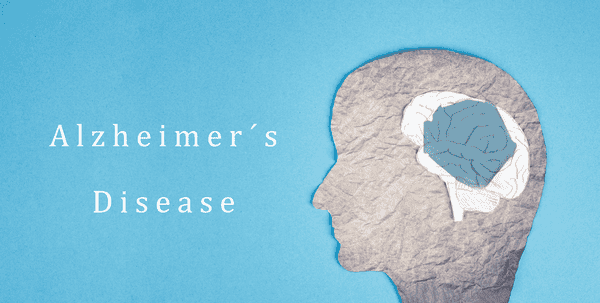Have you ever stopped to ponder the mysteries that shroud Alzheimer’s disease, a condition that touches the lives of millions worldwide without mercy? Imagine the tangled web of causes and risk factors weaving the intricate tapestry of this enigmatic illness, leaving families grappling for answers and researchers tirelessly seeking solutions.
In our journey through this blog, we aim to unravel the complexities of Alzheimer’s, offering a beacon of clarity amid the fog of uncertainty. Together, we’ll delve into the very heart of this enigmatic disease, exploring its origins and the haunting risk factors that lurk in the shadows. Our goal? To arm you with knowledge, empowering you to navigate the labyrinthine realm of Alzheimer’s disease with wisdom and understanding.
So, grab a hand in ours as we embark on a voyage of discovery, shedding light on the enigmatic landscape of Alzheimer’s disease. Let’s uncover the secrets, unlock the mysteries, and walk side by side on a path towards enlightenment and hope.
Understanding the Causes of Alzheimer’s
Alzheimer’s disease, a progressive and irreversible neurological condition, affects millions of people worldwide. Although its exact cause remains elusive, researchers have identified several factors that contribute to the development of this debilitating disease. Understanding the various causes of Alzheimer’s is crucial in advancing our knowledge and working towards effective prevention and treatment strategies.
Genetic Factors
One significant cause of Alzheimer’s disease is genetic predisposition. Mutations in certain genes have been linked to an increased risk of developing the condition. The most well-known gene associated with Alzheimer’s is the APOE gene, specifically the APOE ε4 allele. Individuals who inherit two copies of the APOE ε4 allele from both parents have a significantly higher risk of developing Alzheimer’s. However, it is important to note that possessing the APOE ε4 allele does not necessarily mean a person will develop the disease.
Environmental Factors
Environmental factors also play a role in the development of Alzheimer’s disease. Chronic exposure to certain substances or conditions can increase the risk of cognitive decline and dementia. For example, long-term exposure to air pollution, heavy metals, or pesticides has been associated with a higher likelihood of developing Alzheimer’s. Additionally, head injuries, particularly those involving concussions, have been linked to an increased risk of developing the disease.
Age
Age is the most well-established risk factor for Alzheimer’s disease. The incidence of the disease increases significantly with advancing age. While Alzheimer’s can affect individuals as early as their 40s or 50s, the risk rises exponentially after the age of 65. The exact reasons behind this age-related increase in risk are still being investigated, but it may be due to a combination of genetic, metabolic, and environmental factors.
Lifestyle Factors
Certain lifestyle choices can influence the risk of developing Alzheimer’s disease. Chronic health conditions such as hypertension, diabetes, and obesity have been linked to an increased risk. Additionally, a sedentary lifestyle, lack of physical activity, smoking, excessive alcohol consumption, and poor diet have all been associated with a higher likelihood of developing the disease. Adopting a healthy lifestyle that includes regular exercise, a balanced diet, and avoiding harmful habits can help reduce the risk of Alzheimer’s.
Tips for Reducing Alzheimer’s Risk
Reducing the risk of developing Alzheimer’s disease requires adopting a proactive approach towards maintaining brain health. While there is no guaranteed method to prevent the onset of the disease, research suggests that certain lifestyle choices and habits can potentially lower the risk. Here are some practical tips and recommendations to consider:
- Stay Physically Active: Engage in at least 150 minutes of moderate-intensity aerobic activity each week, such as brisk walking, swimming, or cycling. Incorporate strength training exercises to further benefit cognitive function.
- Follow a Brain-Healthy Diet: Adopt a balanced diet rich in fruits, vegetables, whole grains, lean proteins, and healthy fats. Consider dietary patterns like the Mediterranean or DASH diet, which may reduce the risk of cognitive decline.
- Maintain Cognitive Engagement: Keep your brain active with puzzles, crosswords, reading, learning new skills, or playing musical instruments. Stay socially connected through community activities and maintaining relationships.
- Prioritize Quality Sleep: Aim for 7-8 hours of uninterrupted sleep each night to support cognitive function and memory consolidation. Establish a relaxing bedtime routine and create a sleep-friendly environment.
- Manage Chronic Conditions: Take steps to manage conditions like diabetes, high blood pressure, and obesity, which increase the risk of cognitive decline. Follow medical recommendations and maintain regular check-ups.
- Stimulate Your Senses: Engage your senses with music, diverse tastes, new scents, and visual arts. Sensory stimulation can provide cognitive benefits and support overall brain health.
Remember, reducing the risk of Alzheimer’s disease involves a multifaceted approach that combines various lifestyle factors. By incorporating these tips into your daily routine, you can potentially promote brain health and lower the risk of developing this debilitating condition.
“The more we invest in our brain health, the better chance we have in reducing the risk of Alzheimer’s disease.”
Conclusion and Future Outlook
Alzheimer’s disease remains a complex and devastating illness affecting millions globally. Our exploration of its causes and risk factors underscores the intricate interplay between genetic predisposition and environmental influences. Genetic mutations, especially in the APOE gene, increase susceptibility to Alzheimer’s, while environmental factors such as head trauma and chronic diseases further elevate risk.
Advancing age remains the primary risk factor for Alzheimer’s disease, with risk exponentially rising after age 65. Family history of Alzheimer’s and lifestyle factors like physical inactivity, poor diet, smoking, and limited cognitive engagement also contribute significantly to disease risk. Understanding these factors is crucial for implementing preventive measures and promoting brain health.
The relationship between Alzheimer’s disease and other types of dementia, such as vascular dementia and Lewy body dementia, complicates diagnosis and treatment approaches. Ongoing research in biomarker testing and neuroimaging offers hope for earlier detection and intervention. Emerging therapies like immunotherapies and gene therapies show promise in managing and potentially preventing disease progression.
In conclusion, while Alzheimer’s disease presents significant challenges, continued research, increased awareness, and adoption of healthy lifestyle habits are key to reducing risk and advancing prevention strategies. By prioritizing brain health through physical activity, a brain-healthy diet, cognitive engagement, quality sleep, chronic disease management, and sensory stimulation, individuals can take proactive steps towards mitigating Alzheimer’s risk. Together, we strive towards a future where effective treatments and preventive measures combat this devastating disease.
“The more we invest in our brain health, the greater our opportunity to reduce the risk of Alzheimer’s disease.”













